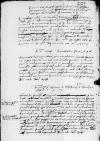List #1771
Ioannes DANTISCUS do Fernando de GUEVARALöbau (Lubawa), 1537-11-16
Rękopiśmienne podstawy źródłowe:
Pomocnicze podstawy źródłowe:
Publikacje:
| ||||||||||
Tekst + aparat krytyczny + komentarz Zwykły tekst Tekst + komentarz Tekst + aparat krytyczny
Ioannes etc., Dei gratia episcopus Culmensis, administrator Pomesaniensis et ad episcopatum Varmiensem postulatus, Egregio Domino doctori Gueuarre salutem plurimam dicit.
Quod nobis eruditum
Ex
